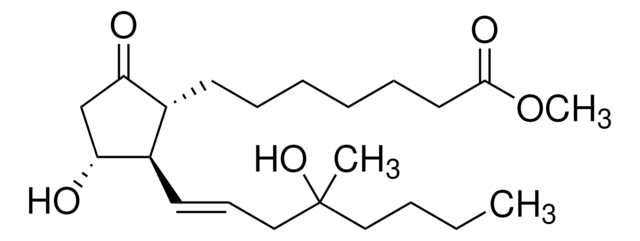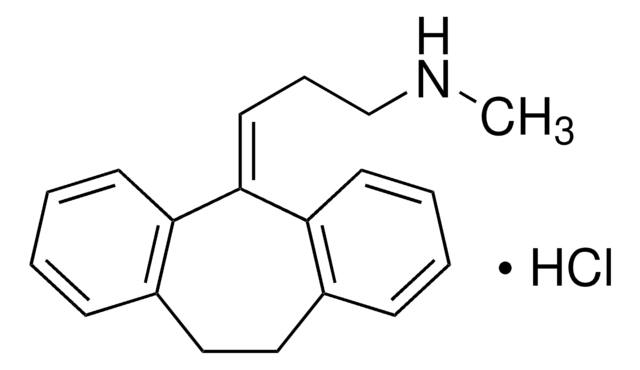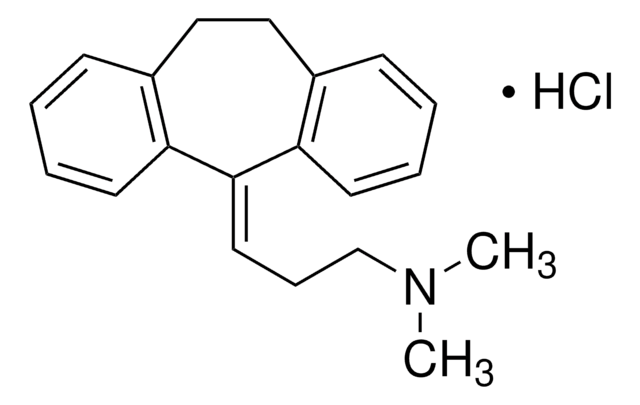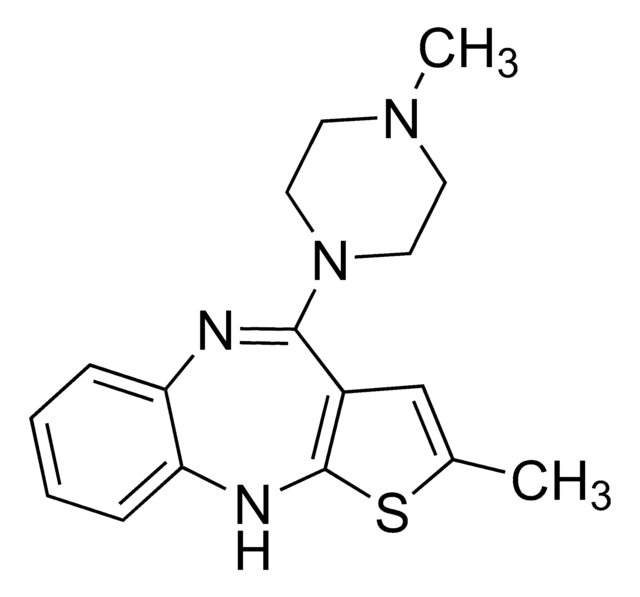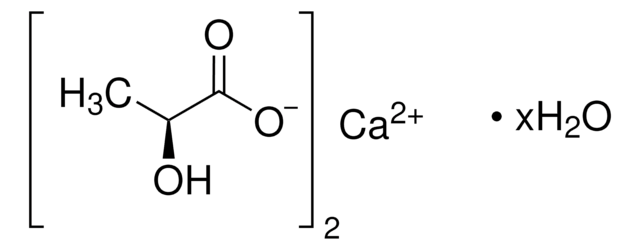M6932
Misoprostol free acid
≥90%
Synonyme(s) :
(±)-15-Deoxy-(16RS)-16-hydroxy-16-methylprostaglandin E1
About This Item
Produits recommandés
Niveau de qualité
Essai
≥90%
Forme
liquid
Groupe fonctionnel
carboxylic acid
Température de stockage
−20°C
Chaîne SMILES
CCCCC(C)(O)C\C=C\[C@H]1[C@H](O)CC(=O)[C@@H]1CCCCCCC(O)=O
InChI
1S/C21H36O5/c1-3-4-13-21(2,26)14-9-11-17-16(18(22)15-19(17)23)10-7-5-6-8-12-20(24)25/h9,11,16-17,19,23,26H,3-8,10,12-15H2,1-2H3,(H,24,25)/b11-9+/t16-,17-,19-,21?/m1/s1
Clé InChI
CNWGPXZGIIOYDL-MKYGPDKMSA-N
Catégories apparentées
Actions biochimiques/physiologiques
Mention d'avertissement
Danger
Mentions de danger
Conseils de prudence
Classification des risques
Acute Tox. 3 Oral - Eye Irrit. 2 - Repr. 2 - Skin Irrit. 2 - STOT SE 3
Organes cibles
Respiratory system
Code de la classe de stockage
6.1C - Combustible acute toxic Cat.3 / toxic compounds or compounds which causing chronic effects
Classe de danger pour l'eau (WGK)
WGK 3
Point d'éclair (°F)
Not applicable
Point d'éclair (°C)
Not applicable
Faites votre choix parmi les versions les plus récentes :
Déjà en possession de ce produit ?
Retrouvez la documentation relative aux produits que vous avez récemment achetés dans la Bibliothèque de documents.
Notre équipe de scientifiques dispose d'une expérience dans tous les secteurs de la recherche, notamment en sciences de la vie, science des matériaux, synthèse chimique, chromatographie, analyse et dans de nombreux autres domaines..
Contacter notre Service technique